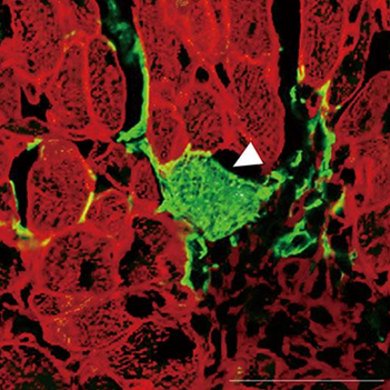Overexpression of Gata4, Mef2c, and Tbx5 Generates Induced Cardiomyocytes Via Direct Reprogramming and Rare Fusion in the Heart
(Note: Text has been auto translated from Japanese language.)

To date, this research group has developed a "myocardial direct reprogramming method" that induces cardiomyocytes directly from cardiac fibroblasts without using stem cells. This is another method that can help solve these issues. However, the myocardial cells produced by introducing a myocardial reprogramming gene into cardiac fibroblasts in vivo are truly induced regenerated myocardial cells derived from cardiac fibroblasts, or cardiac fibroblasts and surrounding myocardial cells.
It was unclear whether it was a myocardial cell that was being regenerated and formed by fusing. Therefore, in this study, we have shown that the new cardiomyocytes produced in vivo using genetically modified mice, are the genealogy and fusion of cells that are true regenerated cardiomyocytes derived from cardiac fibroblasts. This is the first time this has been revealed.
In this study, it was found that cardiomyocytes can be directly induced from cardiac fibroblasts by introducing a myocardial reprogramming gene into a mouse body. The results of this study greatly advance the realization of new cardiac regenerative medicine for heart disease.
→
Overexpression of Gata4, Mef2c, and Tbx5 Generates Induced Cardiomyocytes Via Direct Reprogramming and Rare Fusion in the Heart
→ Research Outline (PDF In Japanese language)